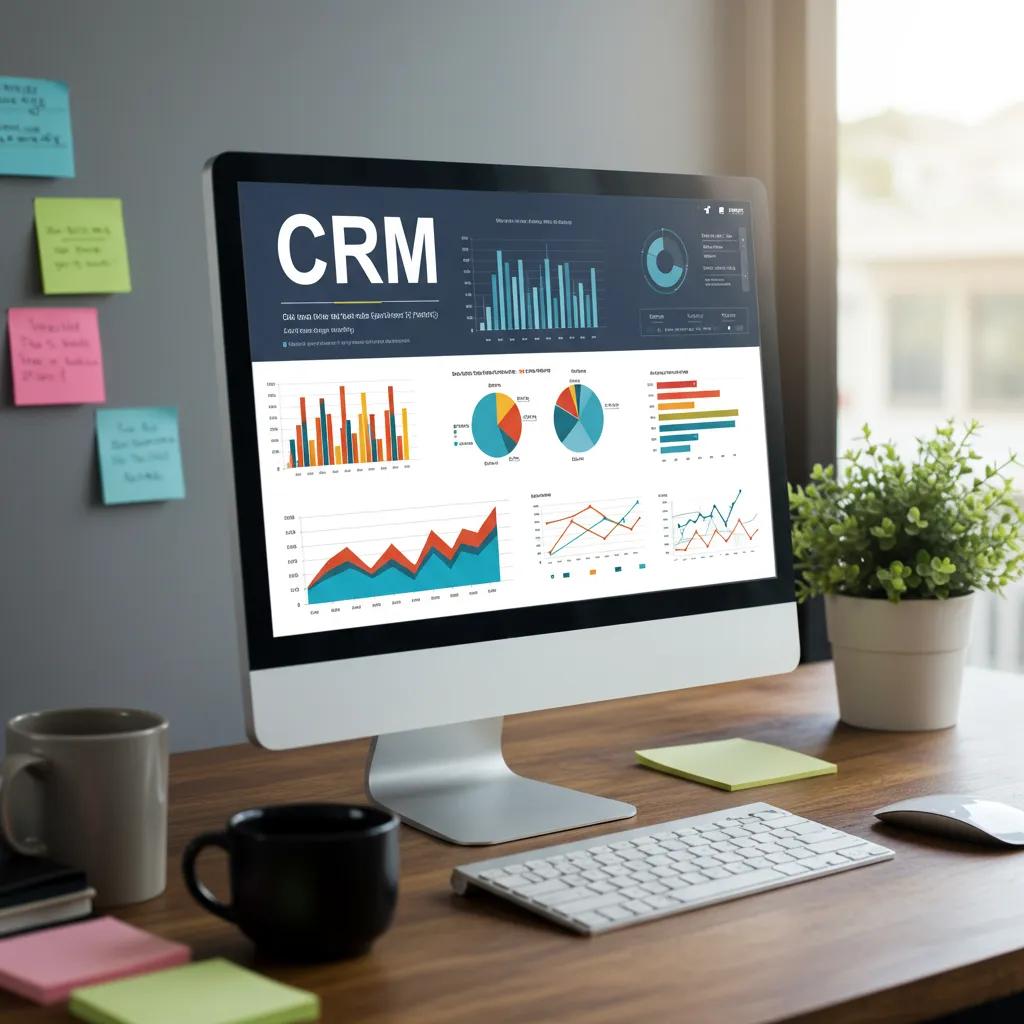Business Sales Strategies and Best Practices to Boost Lead Generation
Business Sales Strategies and Best Practices to Boost Performance and Lead Generation
A strong sales strategy can increase close rates by up to 29 percent and transform stagnating pipelines into reliable revenue engines. In this guide, you will discover how targeted methodologies, optimized lead generation, CRM mastery, and data-driven performance metrics coalesce to drive business-to-business sales growth. We’ll explore consultative, value-based, inbound and outbound, and account-based selling, then unpack proven prospecting tactics, essential CRM capabilities, key performance indicators, relationship-building techniques, AI innovations, and marketing alignment frameworks. By integrating a generic sales enablement platform’s automation and analytics capabilities as a supporting resource, you will learn to streamline workflows without sacrificing customer focus. Each section maps directly to strategic objectives: refining sales tactics, generating qualified leads, leveraging technology, measuring success, nurturing loyalty, embracing AI, and aligning marketing. Master these best practices to boost performance and lead generation in B2B business sales.
What Are the Most Effective Sales Strategies for Business Growth?
A successful sales strategy defines target segments, applies a structured methodology, and delivers measurable revenue gains through focused execution. By selecting the right approach—such as consultative, value-based, inbound, outbound, or account-based selling—organizations can improve conversion rates and maximize lifetime value. These strategies leverage customer insights, tailor messaging to buyer pain points, and align sales activities with broader growth objectives.
Consultative selling improves business sales by positioning sales representatives as trusted advisors who diagnose customer challenges and co-create solutions. This methodology relies on active listening, needs analysis, and collaborative proposal development to foster deeper buyer engagement. Sales teams that adopt consultative techniques report higher deal sizes and stronger retention, laying the foundation for upselling and cross-selling.
Value-based selling drives revenue by quantifying return on investment through business impact metrics rather than focusing on product features alone. Demonstrating cost savings, productivity gains, or risk mitigation resonates with executive stakeholders and accelerates approval cycles. Organizations that deploy value models see average deal sizes increase by 15 to 25 percent, as buyers invest based on clear financial outcomes.
Value-Based Selling: Enhancing Sales Success with Rational Arguments
Value-based selling and its key methods have been characterized as an effective way of selling in the existing literature. This is assumed to be due to the fact that an explicit indication of value makes customer’s purchase decision easier because the investment can be reasoned with rational arguments. Typical value-based selling tools are value calculators and reference cases. However, regardless of the strong theoretical support for the effectiveness of value-based selling, no research thus far has empirically and with actual sales data examined what kind of effects value-based selling activities have on sales success.The effect of value-based selling activities on sales success, Unknown Author, 2016
Inbound and outbound sales strategies differ in lead origin and resource allocation: inbound prioritizes content-driven attraction and nurtures prospects through education, while outbound relies on proactive outreach via cold calling, email campaigns, and social selling. Combining both approaches creates an omnichannel pipeline that balances volume with quality, ensuring consistent lead flow and targeted engagement.
Account-based sales focuses on high-value prospects by orchestrating personalized campaigns across multiple stakeholders within target accounts. This hyper-targeted B2B approach aligns marketing, sales, and customer success to coordinate messaging, content, and outreach at each buyer stage. When deployed effectively, account-based selling can boost win rates by up to 50 percent for strategic enterprise deals.
Account-Based B2B Marketing: Advanced Tech for Lead Generation & Performance
The emphasis is on generating leads and opportunities with advanced technologies, resulting in accelerated business and recurring income streams. In particular, the authors develop practitioner-oriented indices that understand the driving forces behind advanced technology usage and determine the specific media suitable for the essential account-based marketing-related process phases. The authors discuss the inclination to engage in advanced technologies, present a relevant set of digital media, and develop two dimensions of business performance metrics. Moreover, they recommend practitioners to build awareness, mentor, and incentivize advanced technology usage, especially for tech-averse account marketing executives. Finally, the authors present proven concepts supported by industry case studies that help practitioners optimize their account-based marketing (ABM) by aligning the siloed processes between the marketing and sales functions, replicating the research to their industry, and creating an excellent customer experience.Account-Based B2B Marketing: Integrating Advanced Technology to Optimize Processes and Performance, W Krings, 2025
To implement these strategies effectively, sales teams should integrate training, technology, and continuous feedback loops. Regular role-plays, playbook updates, CRM workflows, and performance dashboards synchronize execution and foster a culture of continuous improvement. Establishing clear ownership for each phase of the process ensures accountability and maximizes the impact of strategic initiatives.
How Can Lead Generation Techniques Increase Qualified Business Sales Leads?

Lead generation is the structured process of attracting and converting target prospects into sales-ready opportunities through inbound and outbound methods. Effective lead acquisition hinges on crafting compelling value propositions, leveraging multichannel outreach, and optimizing conversion touchpoints to deliver qualified pipeline growth.
The best B2B lead generation methods combine content marketing, email outreach, social selling, and targeted advertising. Content marketing educates and attracts prospects through whitepapers, webinars, and case studies. Email outreach uses personalized sequences to nurture interest and schedule discovery calls. Social selling leverages professional networks to build trust, and targeted ads deliver offers to high-intent audiences.
Optimizing your sales pipeline for better lead conversion requires mapping each stage—from initial contact to close—and identifying friction points. Tracking lead velocity, drop-off rates, and time to qualification enables focused improvements. Automating follow-up sequences, scoring leads by demographic and behavioral signals, and routing opportunities to the right sales reps accelerate progression through the funnel.
Cold calling and email outreach best practices center on relevant personalization, concise messaging, and value-driven calls to action. Scripts should lead with pain-point context, quantify potential gains, and propose a specific next step. Email subject lines that reference mutual connections or industry challenges improve open rates, while call cadences that blend persistence with respect respect recipient bandwidth.
Social selling enhances lead generation by combining content sharing, relationship building, and targeted prospect research on professional networks. Sharing industry insights and engaging with prospect content signals relevance and authority. Sales teams that incorporate social listening and structured engagement workflows capture early-stage interest and warm leads for formal outreach.
| Lead Generation Method | Characteristic | Benefit |
|---|---|---|
| Content Marketing | Educational resources | Attracts and nurtures informed prospects |
| Email Outreach | Personalized sequences | Increases engagement and meetings |
| Social Selling | Relationship-driven engagement | Builds trust and early-stage interest |
| Paid Advertising | Demographic and behavioral targeting | Rapidly scales qualified lead volume |
Combining these approaches into an integrated lead generation engine ensures a steady flow of qualified leads, preparing the organization to convert opportunities into revenue.
Why Is CRM Software Essential for Managing Business Sales?

CRM software centralizes customer data, automates sales tasks, and delivers analytics that improve revenue forecasting and relationship management. By offering unified contact management, pipeline visualization, activity tracking, and reporting, a CRM platform becomes the backbone of scalable B2B business sales operations.
What features should you look for in a CRM for sales? Seek contact and account management, deal tracking, workflow automation, customizable dashboards, email integration, and mobile access. Advanced systems also include AI-powered lead scoring, sales playbook templates, and collaborative tools that align sales, marketing, and customer success teams.
| CRM Capability | Description | Impact |
|---|---|---|
| Contact Management | Centralized database of leads and customers | Improves outreach consistency |
| Sales Automation | Automated reminders and task assignments | Reduces administrative overhead |
| Analytics & Reporting | Customizable performance dashboards | Enables data-driven decision-making |
| AI Lead Scoring | Predictive scoring based on behavior and fit | Prioritizes high-value opportunities |
| Marketing Integration | Bi-directional sync with marketing automation | Enhances lead nurturing and handoffs |
How does CRM improve customer relationship management and sales growth? By providing a single source of truth for customer interactions, CRM fosters personalized communication, timely follow-ups, and data-backed outreach strategies. Sales representatives spend more time selling and less time on data entry, driving 15–20 percent higher productivity.
Integrating CRM with marketing automation delivers cross-functional synergy by synchronizing campaigns, lead nurturing, and scoring criteria. This integration ensures that marketing-qualified leads seamlessly transition to sales and that sales feedback refines marketing targeting. The result is consistent messaging and a unified buyer experience.
AI is transforming CRM and sales automation by offering predictive opportunity scoring, next-best-action recommendations, and natural language insights from call recordings. These capabilities accelerate pipeline progression, reduce churn risk, and free sales teams to focus on strategic engagements rather than manual tasks.
Choosing the right CRM system for your business depends on factors such as company size, industry requirements, integration needs, ease of use, and total cost of ownership. Vendors that offer scalable pricing models, robust API ecosystems, and comprehensive support services tend to deliver the greatest long-term value for growing B2B sales organizations.
What Are the Key Sales Performance KPIs to Track for Business Success?
Key sales performance KPIs are quantifiable metrics that measure conversion, productivity, and revenue impact across the sales funnel. Tracking these indicators enables continuous optimization, accurate forecasting, and clear visibility into team effectiveness.
Which sales KPIs best reflect conversion and revenue growth? Conversion rate (opportunities won versus total qualified leads), average deal size, sales cycle length, quota attainment percentage, and customer acquisition cost are critical for benchmarking performance. Monitoring these KPIs reveals strengths, gaps, and areas for focused improvement.
| Performance Indicator | Calculation Method | Desired Outcome |
|---|---|---|
| Conversion Rate | Won deals ÷ qualified leads | Higher percentage indicates efficiency |
| Average Deal Size | Total revenue ÷ number of deals closed | Larger values drive revenue growth |
| Sales Cycle Length | Days from first contact to close | Shorter cycles improve cash flow |
| Quota Attainment | Achieved sales ÷ sales target | Exceeding 100% demonstrates success |
| Customer Acquisition Cost | Total sales & marketing spend ÷ new customers | Lower cost increases profit margins |
How do you set SMART sales goals based on KPIs? Translate broad targets into specific, measurable, attainable, relevant, and time-bound objectives. For example, increase conversion rate from 25 to 30 percent within six months by implementing a new value-based selling playbook and AI-driven lead scoring.
Effective sales forecasting methods combine historical performance data, pipeline volume, and predictive analytics to project future revenue. Rolling forecasts updated monthly or quarterly help sales leaders adjust resource allocation and identify emerging risks before quarter end.
Sales analytics tools improve team productivity by automating report generation, providing deal-stage insights, and highlighting coaching opportunities. Dashboards with drill-down capabilities surface underperforming reps, lagging industry segments, or stalled deals, enabling targeted interventions.
Using KPIs to optimize the sales funnel involves analyzing stage-by-stage conversion rates, identifying bottlenecks, and deploying remediation strategies. For instance, low qualification rates may prompt enhanced prospect profiling, while slow negotiation stages might require revised proposal templates or price-justification materials.
How Can Businesses Build Strong Customer Relationships to Boost Sales?
Strong customer relationships stem from personalized interactions, proactive support, and continuous value delivery throughout the buyer journey. By focusing on experience, trust, and mutual growth, businesses increase retention, referrals, and upsell opportunities.
What are best practices for enhancing the customer sales experience? Personalize outreach using data-driven insights, tailor product demonstrations to specific use cases, and establish clear communication cadences that anticipate buyer questions. This approach fosters credibility and reduces friction during decision making.
Upselling and cross-selling strategies increase revenue by identifying complementary solutions that address evolving customer needs. Structured account reviews, automated recommendation engines, and incentive programs encourage repeat purchases and expand solution adoption.
Effective customer retention programs leverage loyalty incentives, customer education, and regular business reviews to reinforce value delivery. Satisfaction surveys, executive check-ins, and community forums promote engagement and surface improvement opportunities.
CRM support for long-term customer relationships enhances loyalty by tracking renewal dates, usage patterns, and satisfaction scores. Automated renewal reminders, health-score alerts, and upsell triggers help account managers maintain consistent touchpoints and preempt churn.
Sales teams personalize interactions to improve satisfaction by leveraging CRM data to reference past purchases, project outcomes, and individual preferences. Customized proposals and tailored training sessions demonstrate a deep understanding of client objectives and reinforce partnership value.
How Is Artificial Intelligence Revolutionizing Business Sales Processes?
Artificial intelligence in sales automates routine tasks, uncovers predictive insights, and personalizes outreach at scale to enhance efficiency and revenue impact. By embedding AI into CRM, analytics, and communication tools, organizations accelerate pipeline velocity and improve win rates.
What AI tools automate sales tasks and increase efficiency? Conversational bots handle meeting scheduling, data entry, and basic prospect inquiries. Automated email sequencing platforms trigger outreach based on prospect behavior, while voice-to-text analytics summarize calls and extract action items.
AI improves lead scoring and personalized outreach by analyzing demographic, firmographic, and behavioral data to rank prospects by likelihood to convert. Machine learning models recommend the next best content, channel, or time to engage, boosting response rates by up to 30 percent.
AI-Driven Lead Scoring: Optimize Sales with Machine Learning in Salesforce
Time in the competitive sales scene of today corresponds to financial value. Sales teams should avoid wasting effort on prospects unprepared to make a purchase and focus on the most likely to convert leads. Lead scoring has this purpose. For some years, there have been conventional lead scoring systems based on historical data and rule-based approaches. They place major restrictions, although they help to prioritize leads. These models fail to fit changing client behavior and show rigidity, sometimes using fixed criteria such as job title, company size, or past encounters. Businesses thus face the risk of losing chances for great value or spending too much effort on low-priority leads. Lead scoring modifies this field driven by artificial intelligence. Including machine learning into Salesforce allows companies to employ predictive analytics for real-time lead quality assessment, hence transcending conventional rule-based approaches.AI-Driven Lead Scoring in Salesforce: Using Machine Learning Models to Prioritize High-Value Leads and Optimize Conversion Rates, VK Tarra, 2024
What impact does AI have on sales forecasting and analytics? Predictive analytics models use trend analysis, seasonality adjustments, and account health signals to generate more accurate revenue projections. Real-time anomaly detection flags pipeline risks and highlights high-potential opportunities for immediate action.
Sales teams are adapting to AI-driven sales technology by upskilling through training programs on data interpretation, conversational AI management, and ethical use of automated tools. Change management initiatives ensure buyer relationships remain human-centered even as automation expands.
Future trends in AI will shape business sales beyond 2025 with hyper-personalization engines that integrate third-party intent data, generative AI assistants that draft customized proposals, and advanced predictive models that forecast buyer sentiment shifts. These innovations promise to further streamline workflows and deepen customer engagement.
What Are the Best Practices for Integrating Sales and Marketing to Maximize Business Sales?
Integrating sales and marketing aligns messaging, processes, and technology to create seamless buyer journeys and consistent brand experiences. By coordinating content, outreach, and performance metrics, businesses drive higher lead quality and more efficient pipeline conversion.
How does account-based marketing align with sales strategies? ABM targets specific high-value accounts with tailored campaigns and coordinated touchpoints across email, events, and direct outreach. Joint planning sessions ensure that marketing collateral supports sales conversations and that feedback loops refine audience definitions.
What role does content marketing play in lead generation? Educational assets such as industry reports, best-practice guides, and video tutorials attract prospects, nurture interest, and position the organization as a thought leader. When content maps to buying stages, it accelerates progression and shortens sales cycles.
How can sales and marketing platforms be effectively integrated? Bi-directional API connections sync lead statuses, activity histories, and campaign performance between systems. Shared dashboards display unified pipeline views, enabling both teams to track joint KPIs and adjust tactics in real time.
What metrics track the success of sales and marketing alignment? Joint KPIs such as marketing-sourced revenue, lead-to-opportunity conversion rate, and pipeline velocity measure cross-functional impact. Regular joint reviews of these metrics foster accountability and continuous process refinement.
Social selling bridges marketing and sales efforts by amplifying thought-leadership content through personal networks, driving brand advocacy, and generating inbound interest. Coordinated social media playbooks ensure consistent voice and increase campaign reach.
By uniting sales and marketing around shared goals, processes, and technologies, businesses create a cohesive buyer experience that maximizes lead generation, accelerates deal closure, and drives sustainable revenue growth.
Developing and executing these strategies requires disciplined collaboration, shared performance metrics, and platforms that support seamless information flow. Embracing this integrated approach transforms isolated efforts into a unified engine for business sales success.
Business leaders who adopt these proven practices can expect stronger pipeline health, improved team productivity, deeper customer relationships, and measurable revenue gains over the coming quarters. Continuous optimization, data-driven decision making, and cross-functional alignment ensure long-term performance improvements and competitive advantage in B2B markets.
Business Sales Strategies and Best Practices to Boost Lead Generation






